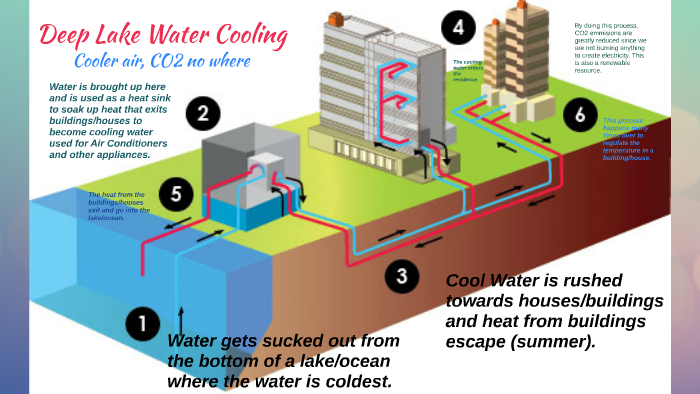Hello ladies and gents this is the Viking telling you that today we are talking about
Can you cool a house without air conditioning?

As global summer temperatures rise, more buildings are installing energy-hungry air conditioners – a major contributor to climate change. But are there ways to cool buildings down without turning the AC on?
At first sight, the view could be mistaken for the rolling hummocks of Hobbiton, right down to the perfectly circular doors opening out of the lush green hillside. But the doors are made of glass, and inside them are not cosy hobbit holes but an array of large mechanical steel arms and levers holding some of the doors ajar.
These hills are part of the roof of the California Academy of Sciences in San Francisco, US. The undulating green roof is one of a series of engineering and design features that make the academy one of the largest passively ventilated spaces in the US. This means that even in the peak of summer, the bulk of this building relies on clever manipulation of the elements to stay cool, with next to no air conditioning.
Could wooden buildings help fight climate change?
Roofs like these are one way that architects, engineers and designers are rethinking buildings to find ways to keep them cool without air conditioning. The challenge is becoming increasingly urgent; it has been yet another scorching year, with heatwaves steamrolling Australia, southern Asia, North America and Europe. To deal with heatwaves, made more frequent by climate change, the number of AC units is expected to more than triple worldwide by 2050. As well as guzzling huge amounts of electricity, AC units contain refrigerants that are potent greenhouse gases. These refrigerants are in fact the fastest-growing source of greenhouse gas emissions in every country on Earth.
But there are alternatives, and plenty of them. From ancient building designs that have been tried and tested over 7,000 years, to the cutting-edge technologies at the California Academy of Sciences, it is possible to create buildings that stay cool with virtually no energy requirements at all.
At the academy, the roof’s grassy domes divert the natural flow of air inside the building. As the wind blows across, one side of the hills is at negative pressure, which helps to suck air through the automatically controlled roof windows and into the building. The fact that the roof is covered with vegetation also helps to bring the temperature down in the space below, as well as providing a habitat for wildlife above.
What about the much more ordinary, everyday buildings that most of us spend the majority of our time in?
“We start off with the attitude of how far can we go in designing the building on the assumption that we’re not going to have AC,” says Alisdair McGregor, global leader for mechanical engineering at Arup, who was involved in the building’s design. But it’s rare to fully climate-control the whole building by that approach, he adds. There might be constraints imposed by a noisy motorway next to a building, making it unfeasible to open the windows. Or the building could have a lot of hot equipment or people with particular needs, such as in a hospital. But at least it means that AC, along with its costs and emissions, is reduced to the bare minimum.
The California Academy of Sciences is a pinnacle in passive design. But it was also an almost half-billion-dollar project with access to some of the best engineers and architects in sustainable development. What about the much more ordinary, everyday buildings that most of us spend the majority of our time in – can passive cooling also make them heatwave-proof?
Water
One of the simplest forms of passive cooling makes use of the temperature change in the air when water evaporates. Water requires energy to go from the liquid state to vapour, and it takes that energy from the air in the form of heat.
“Evaporative cooling is a natural phenomenon,” says Ana Tejero González, an engineer at Valladolid University in northern Spain. “We can see a lot of examples in nature where this happens.” It can cool a surface as well as a body of air, such as your skin when you sweat, or a dog’s tongue when it pants.
In González’s region of Spain, a traditional vessel called a botijo uses the same principle. The botijo is a large pot made of porous clay and used to carry water or wine, which farm labourers would take out into the fields. Small amounts of the drink evaporates through pores in the clay walls, keeping the liquid inside cool even under the hot Spanish sun.
In architecture, the use of evaporative cooling goes back to ancient Egypt and the Romans. But some of the more elaborate examples are from Arabic architecture and a structure called the mashrabiya. A mashrabiya is an ornate, traditionally wooden lattice carved with intricate designs, found on the outside or the inside of a building. As well as providing shade, in the summer the mashrabiya would be home to porous earthenware pots – like the botijo – filled with water. These would help to cool the room as a breeze flowed through the mashrabiya and over the pots.
Even in exposed, hot and arid climates, cooler temperatures are never too far away
But there are even simpler ways to harness evaporative cooling in a building or outside space. A body of water in a courtyard – a pond, fountain or runnels of water flowing throughout the space – all do the same job. And inside, placing an earthenware pot of water near a window or draughty spot can help to cool the place down.
and as always have a chilled day from the Viking
Comments
Post a Comment